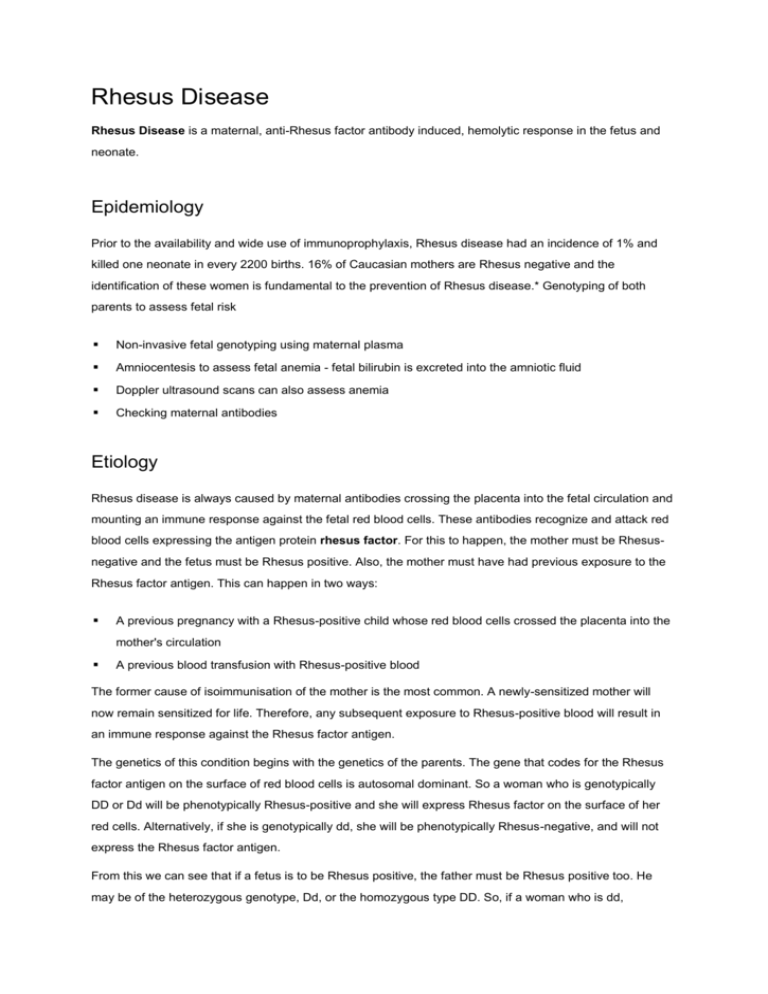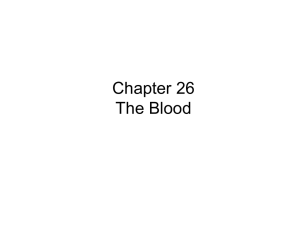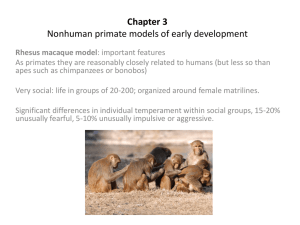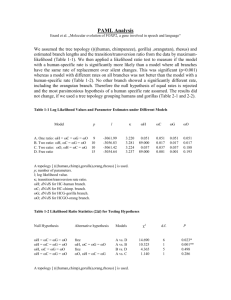Rhesus Disease
advertisement

Rhesus Disease Rhesus Disease is a maternal, anti-Rhesus factor antibody induced, hemolytic response in the fetus and neonate. Epidemiology Prior to the availability and wide use of immunoprophylaxis, Rhesus disease had an incidence of 1% and killed one neonate in every 2200 births. 16% of Caucasian mothers are Rhesus negative and the identification of these women is fundamental to the prevention of Rhesus disease.* Genotyping of both parents to assess fetal risk Non-invasive fetal genotyping using maternal plasma Amniocentesis to assess fetal anemia - fetal bilirubin is excreted into the amniotic fluid Doppler ultrasound scans can also assess anemia Checking maternal antibodies Etiology Rhesus disease is always caused by maternal antibodies crossing the placenta into the fetal circulation and mounting an immune response against the fetal red blood cells. These antibodies recognize and attack red blood cells expressing the antigen protein rhesus factor. For this to happen, the mother must be Rhesusnegative and the fetus must be Rhesus positive. Also, the mother must have had previous exposure to the Rhesus factor antigen. This can happen in two ways: A previous pregnancy with a Rhesus-positive child whose red blood cells crossed the placenta into the mother's circulation A previous blood transfusion with Rhesus-positive blood The former cause of isoimmunisation of the mother is the most common. A newly-sensitized mother will now remain sensitized for life. Therefore, any subsequent exposure to Rhesus-positive blood will result in an immune response against the Rhesus factor antigen. The genetics of this condition begins with the genetics of the parents. The gene that codes for the Rhesus factor antigen on the surface of red blood cells is autosomal dominant. So a woman who is genotypically DD or Dd will be phenotypically Rhesus-positive and she will express Rhesus factor on the surface of her red cells. Alternatively, if she is genotypically dd, she will be phenotypically Rhesus-negative, and will not express the Rhesus factor antigen. From this we can see that if a fetus is to be Rhesus positive, the father must be Rhesus positive too. He may be of the heterozygous genotype, Dd, or the homozygous type DD. So, if a woman who is dd, conceives a child with a man who is Dd, then there is a 50% chance that the child will be Dd and a 50% chance the child will be dd. Alternatively, if a woman who is dd, conceives a child with a man who is DD, then there is a 100% chance that the child will be Dd. Therefore, for Rhesus disease to be possible, the following genetic criteria must be met: The mother must be Rhesus negative (dd) and have had previous exposure to the Rhesus factor antigen The father must be Rhesus positive for Rhesus factor (Dd/DD) The child must be Rhesus positive (Dd is the only genotype possible) The newly-sensitized mother will now remain sensitized for life. Therefore, any subsequent exposure to Rhesus-positive blood will result in an immune response against the Rhesus factor antigen. In a pregnancy with an immunosensitised Rhesus-negative mother and a Rhesus-positive fetus, the anitbodies against Rhesus factor will cross the placenta from the maternal circulation to the fetal circulation. This is Rhesus disease, and has many complications. Pathogenesis Maternal antibodies in the fetal circulation target, attack and damage the fetal red blood cells. The affected red cells travel in the circulation until they are cleared by the reticuloendothelial system of the fetus. The liver works hard to metabolize the products of hemolysis and increases in size. There is an increase in circulatory bilirubin which is excreted by the kidneys into the amniotic fluid. Fetal anemia results. In severe cases the fetus may suffer from: cardiac failure oedema hydrops fetalis Prevention The evidence of Rhesus disease can be assessed by: Genotyping both parents to assess fetal risk Non-invasive fetal genotyping using maternal plasma Amniocentesis to assess fetal anemia - fetal bilirubin is excreted into the amniotic fluid Doppler ultrasound scans can also assess anemia Checking maternal antibodies Anti-D can be given pre-delivery in those at risk to clear the fetal red cells before the mother has any chance to mount an immune response. This preventative measure has revolutionized the obstetric mangement of rhesus disease and saved the lives of numerous neonates. Clinical Features Clinical features include: anemia jaundice hydrops fetalis gross edema hepatosplenomegaly death References www.gpnotebook.co.uk Kumar S, Regan F. Management of pregnancies with RhD alloimmunisation. BMJ 2005;330:1255-1258 O'Connor, J. Pathology 2nd ed. Mosby. Edinburgh. 2002. McCarthy, A & Hunter, B (2003) Master Medicine: Obstetrics and Gynaecology (2nd ed.) Philadelphia: Elsevier Saunder









